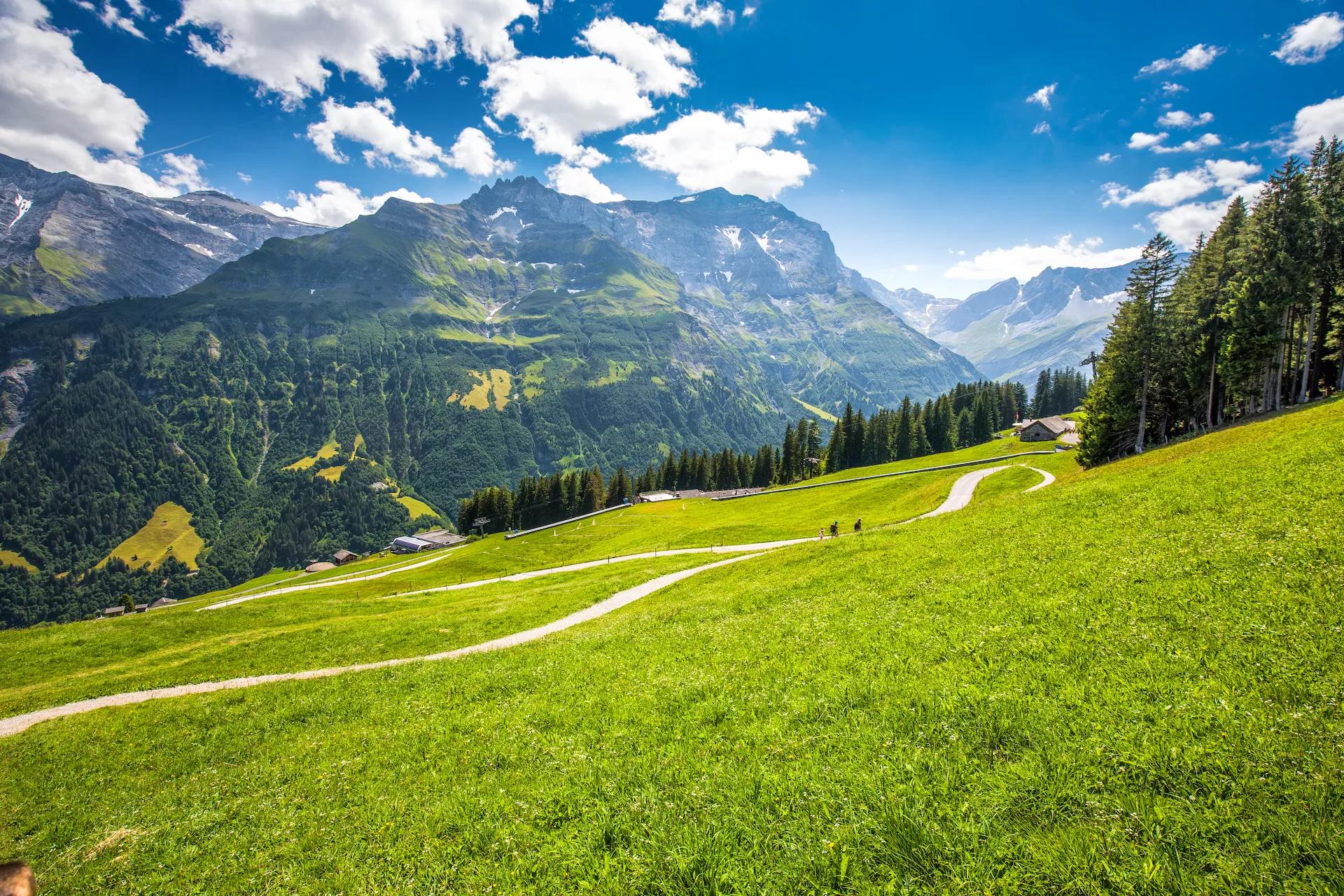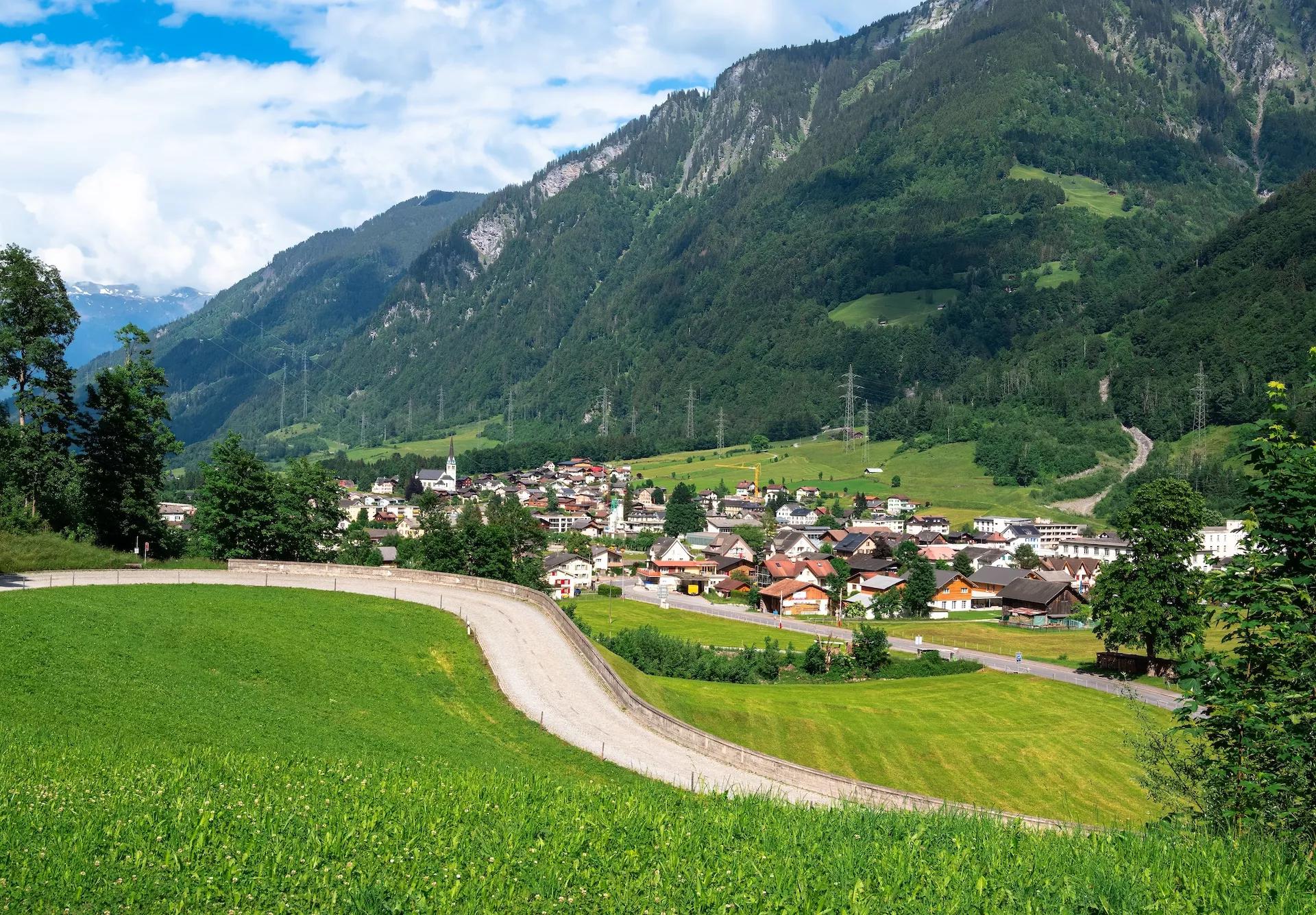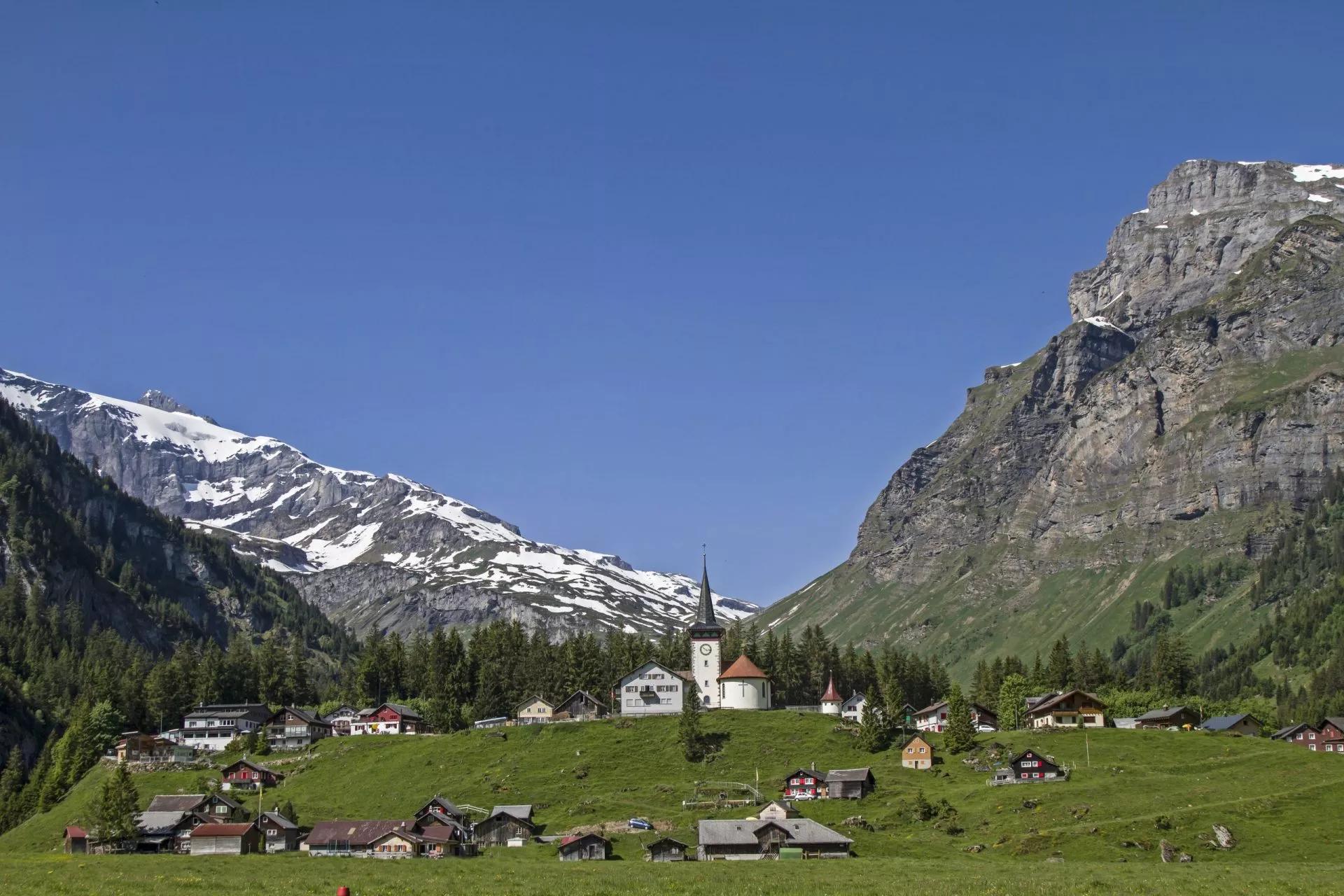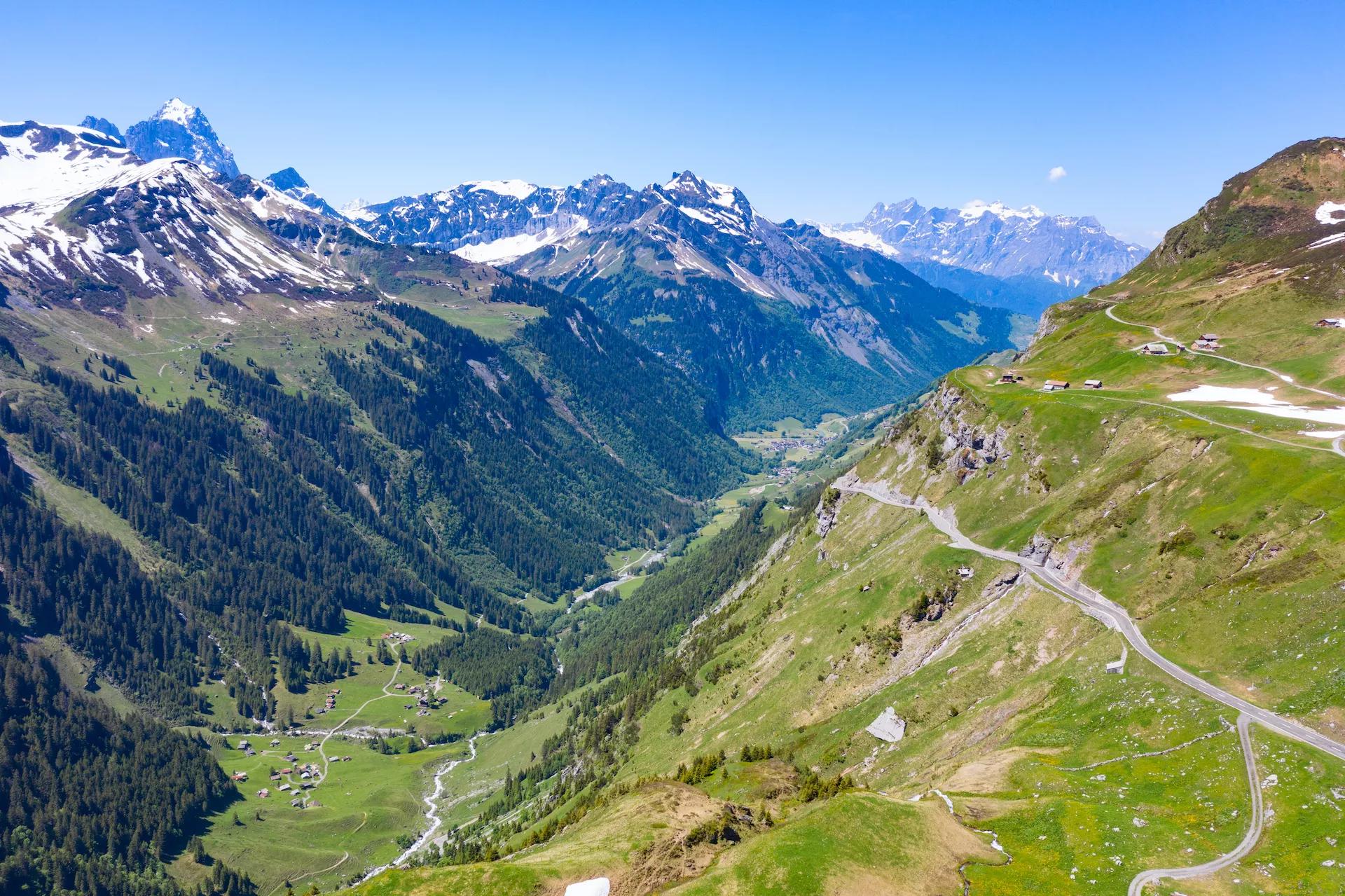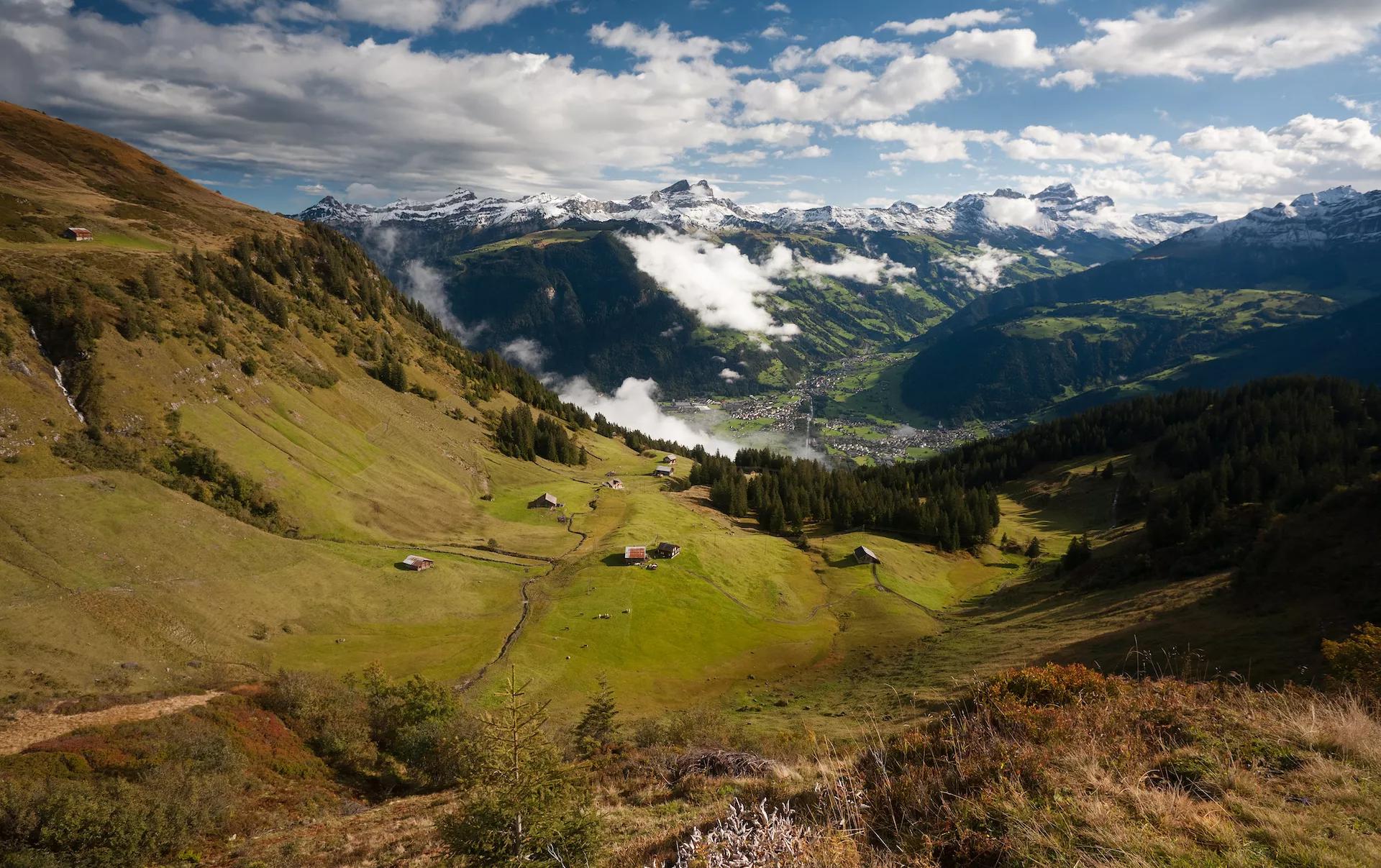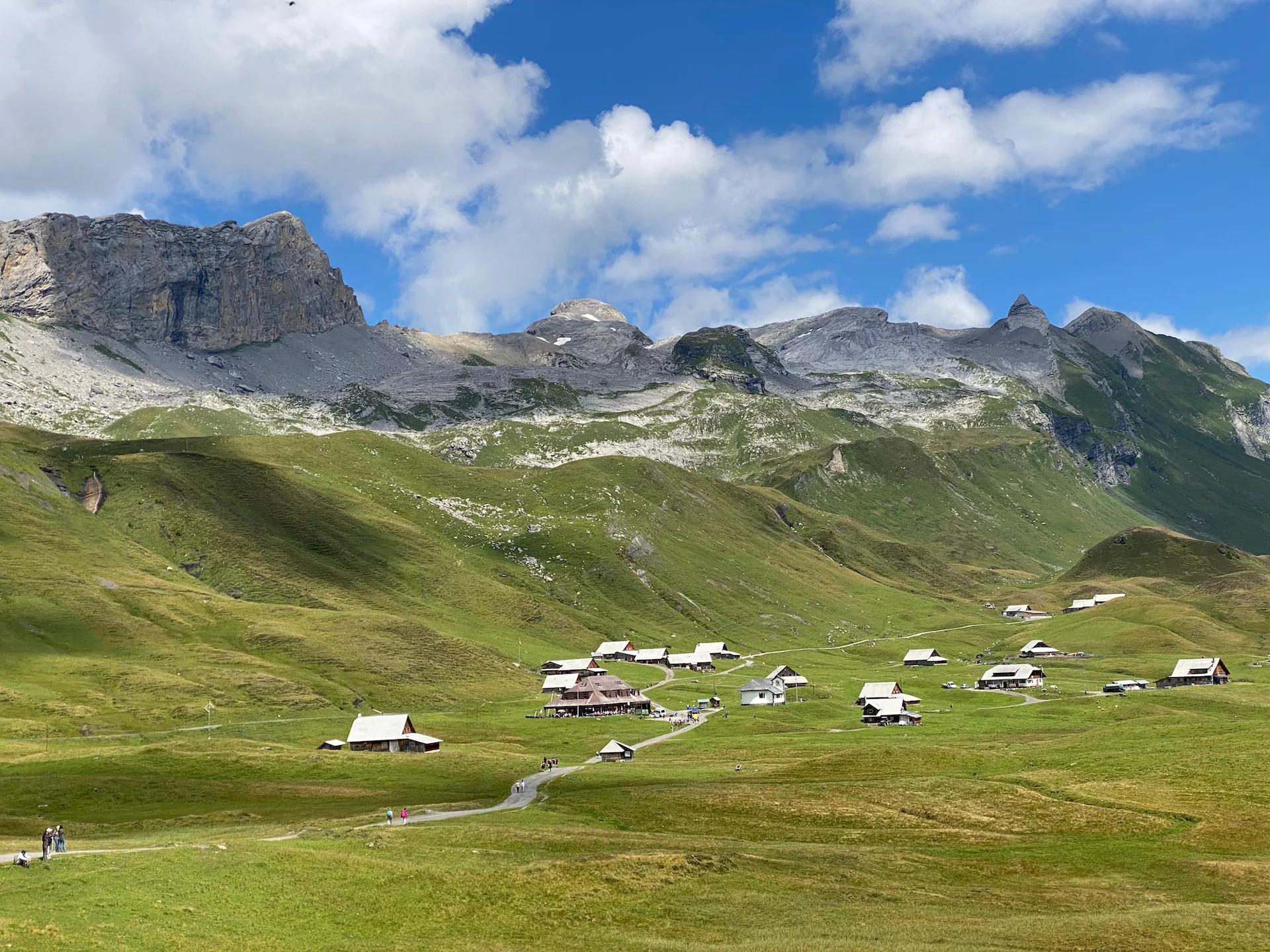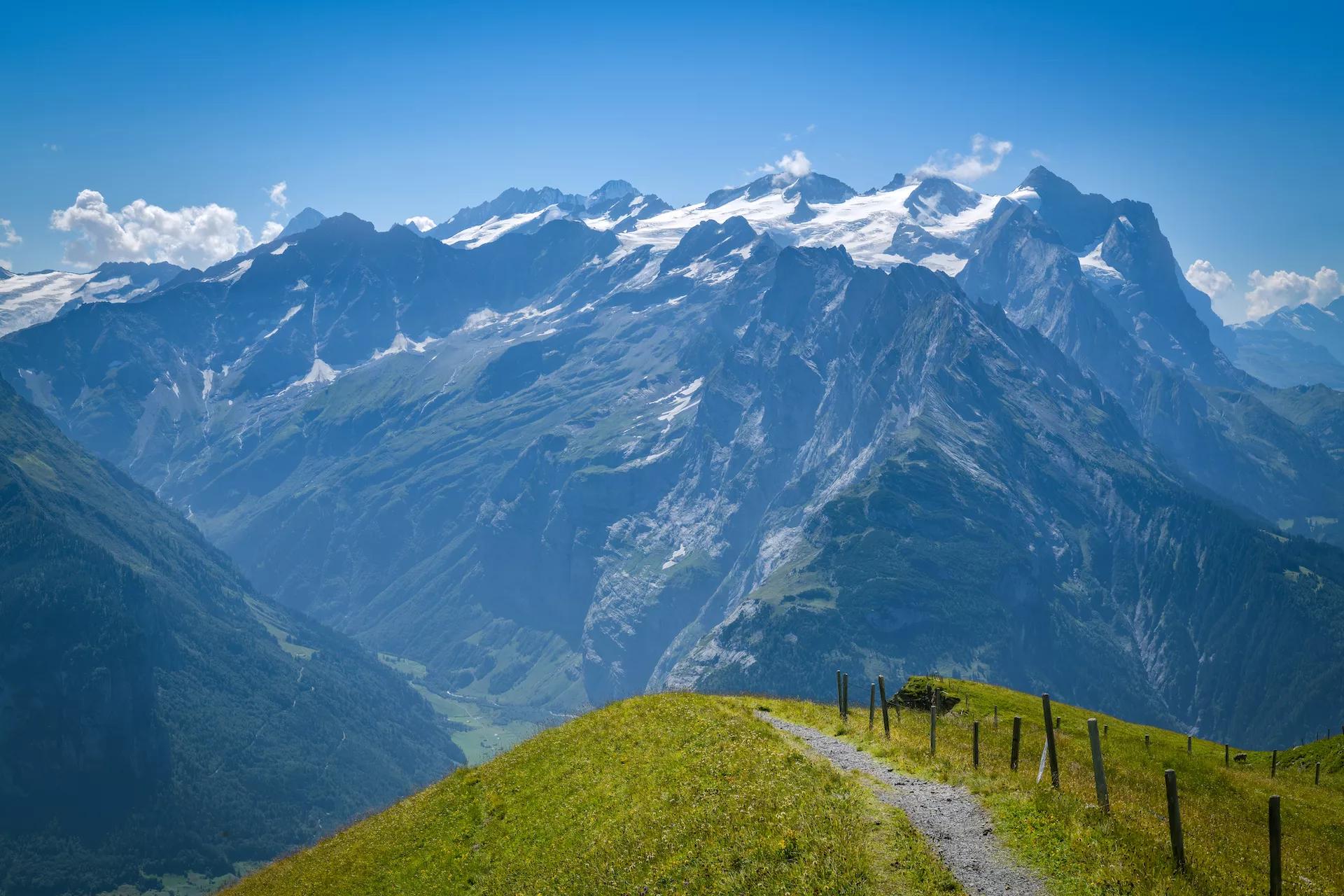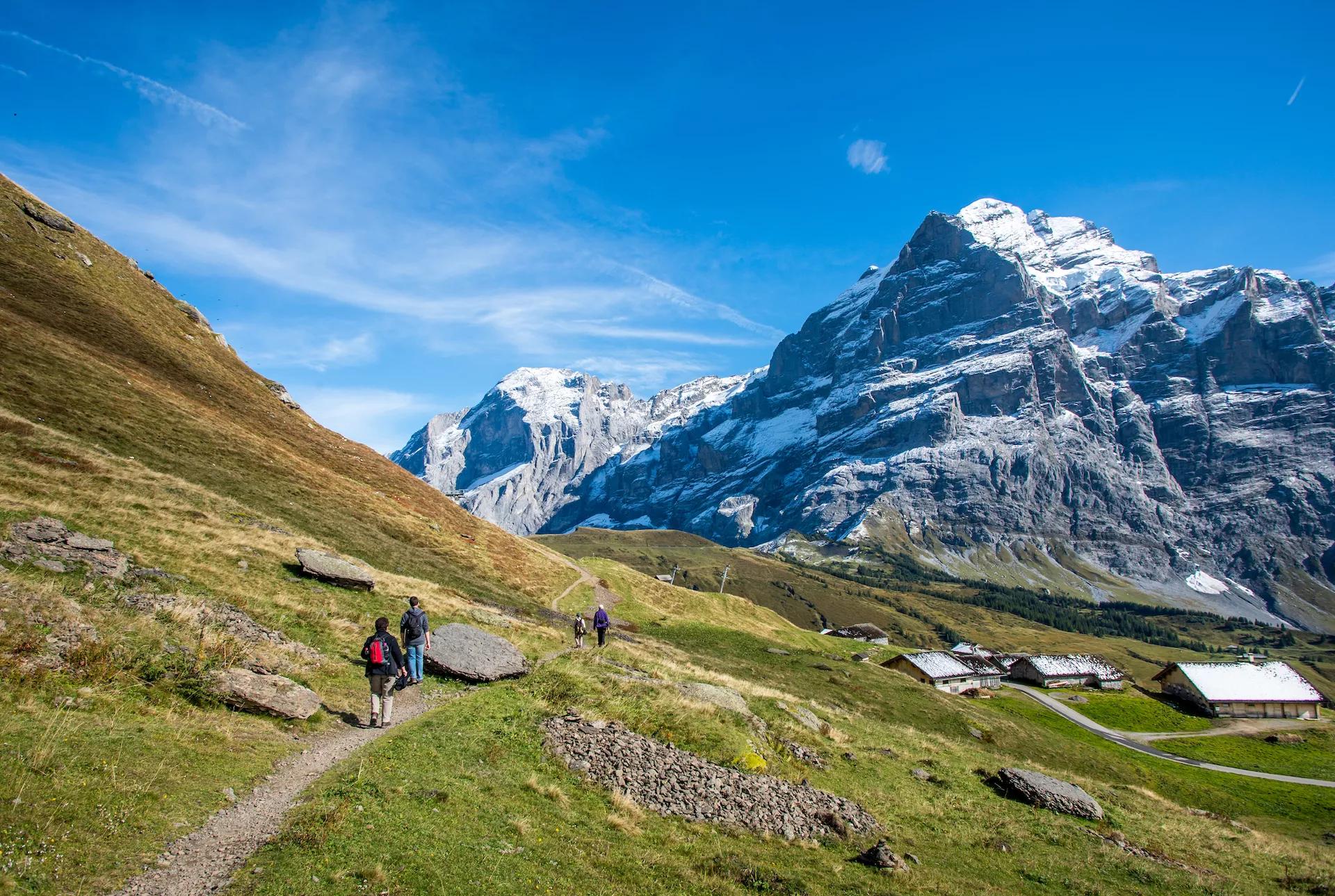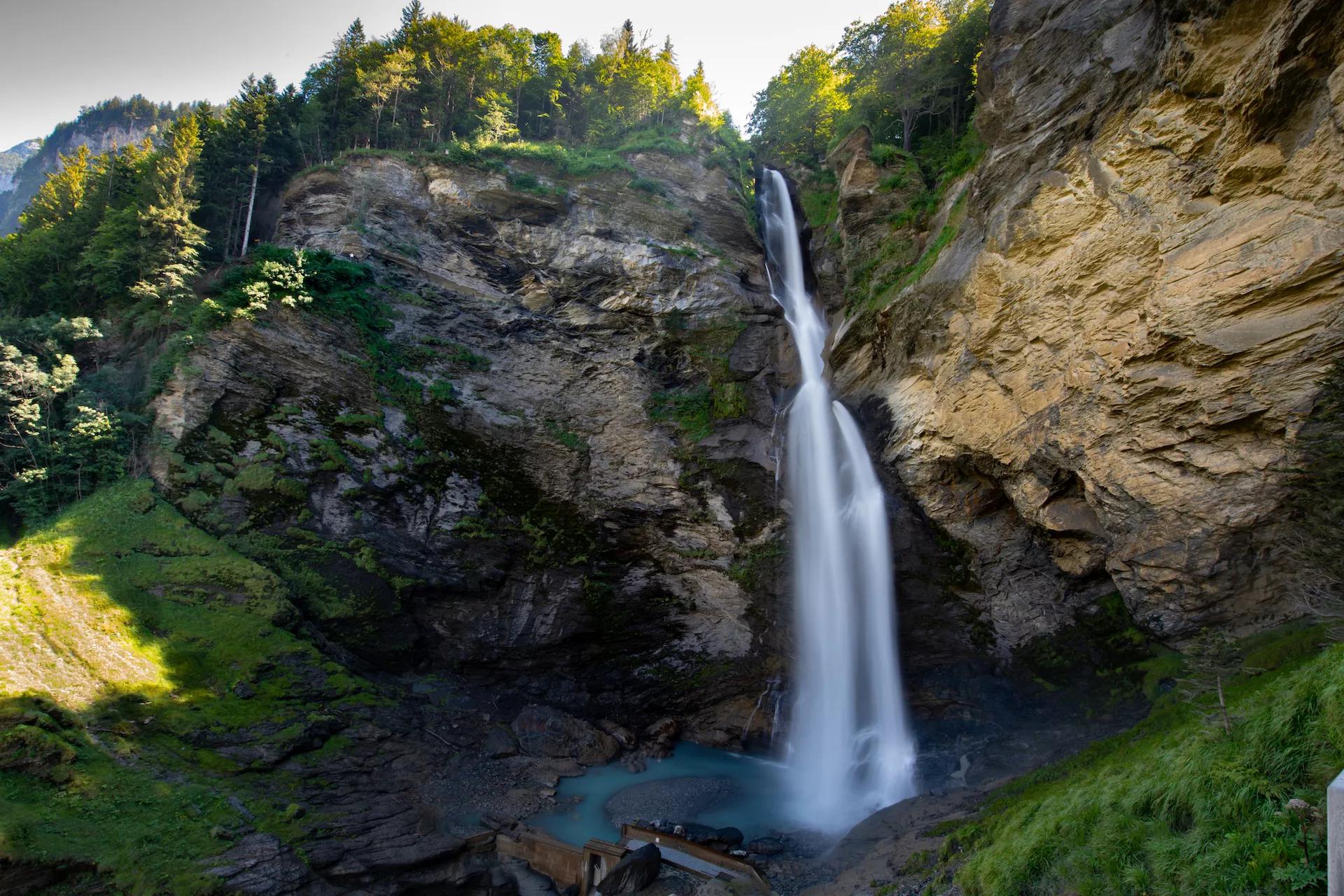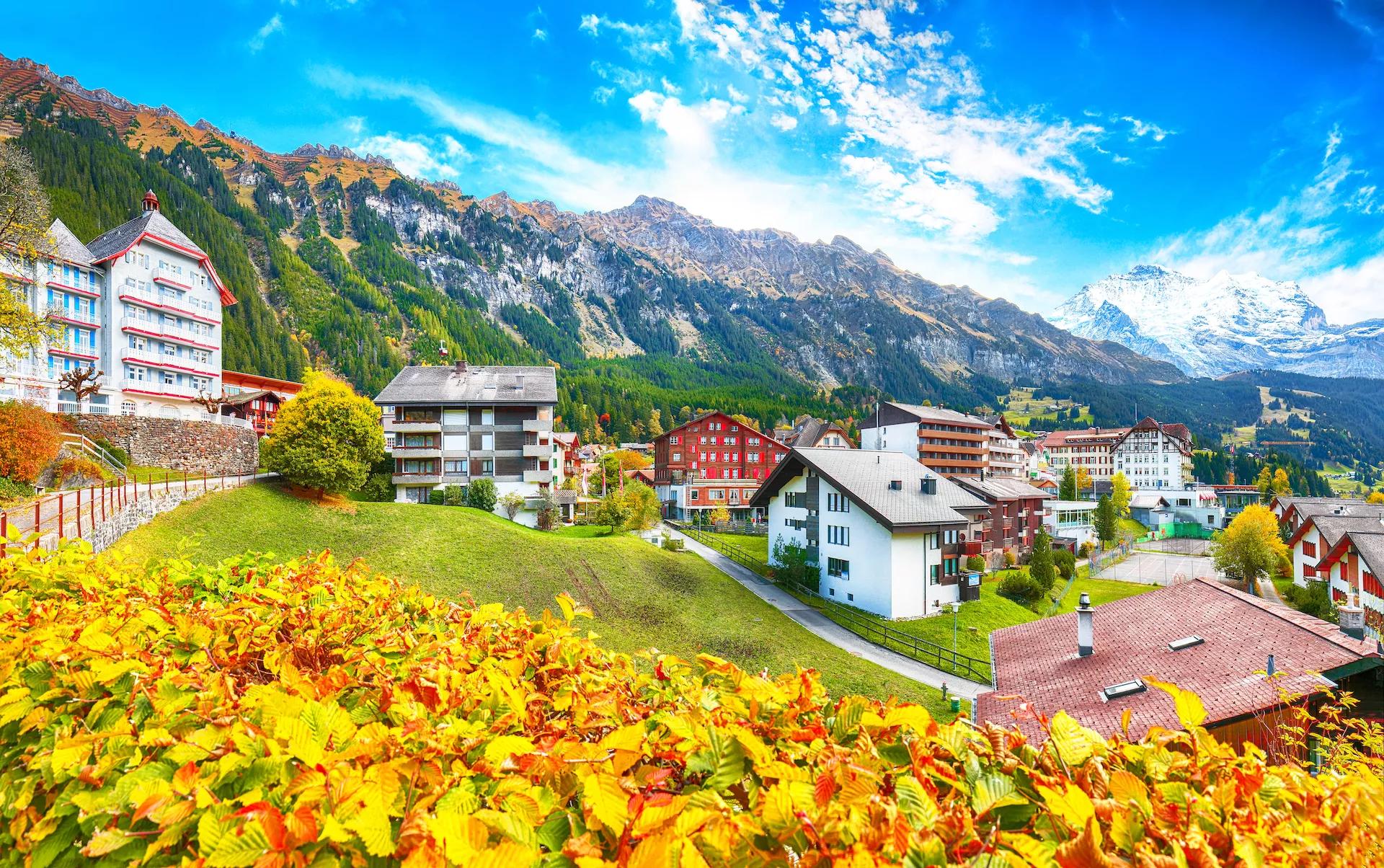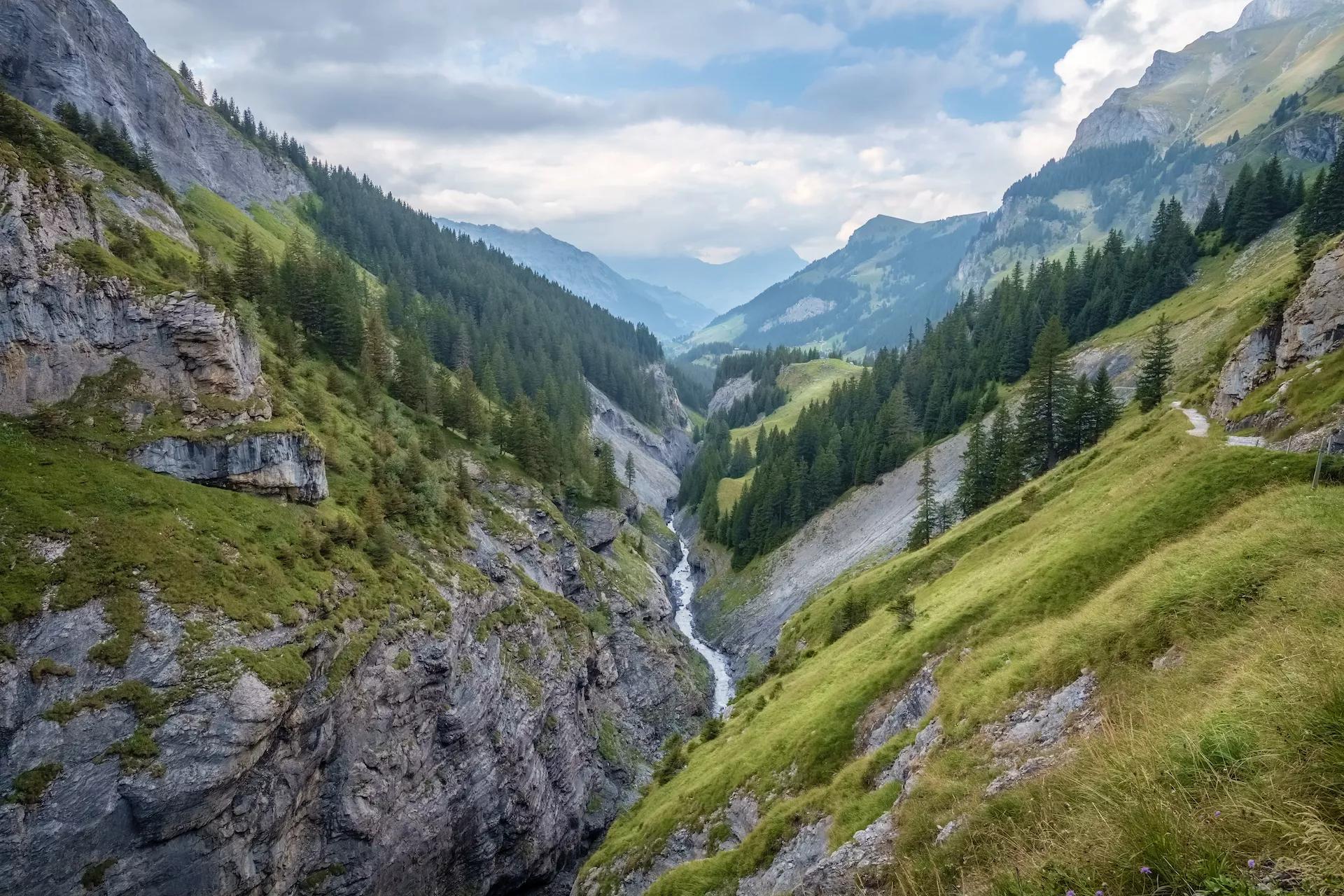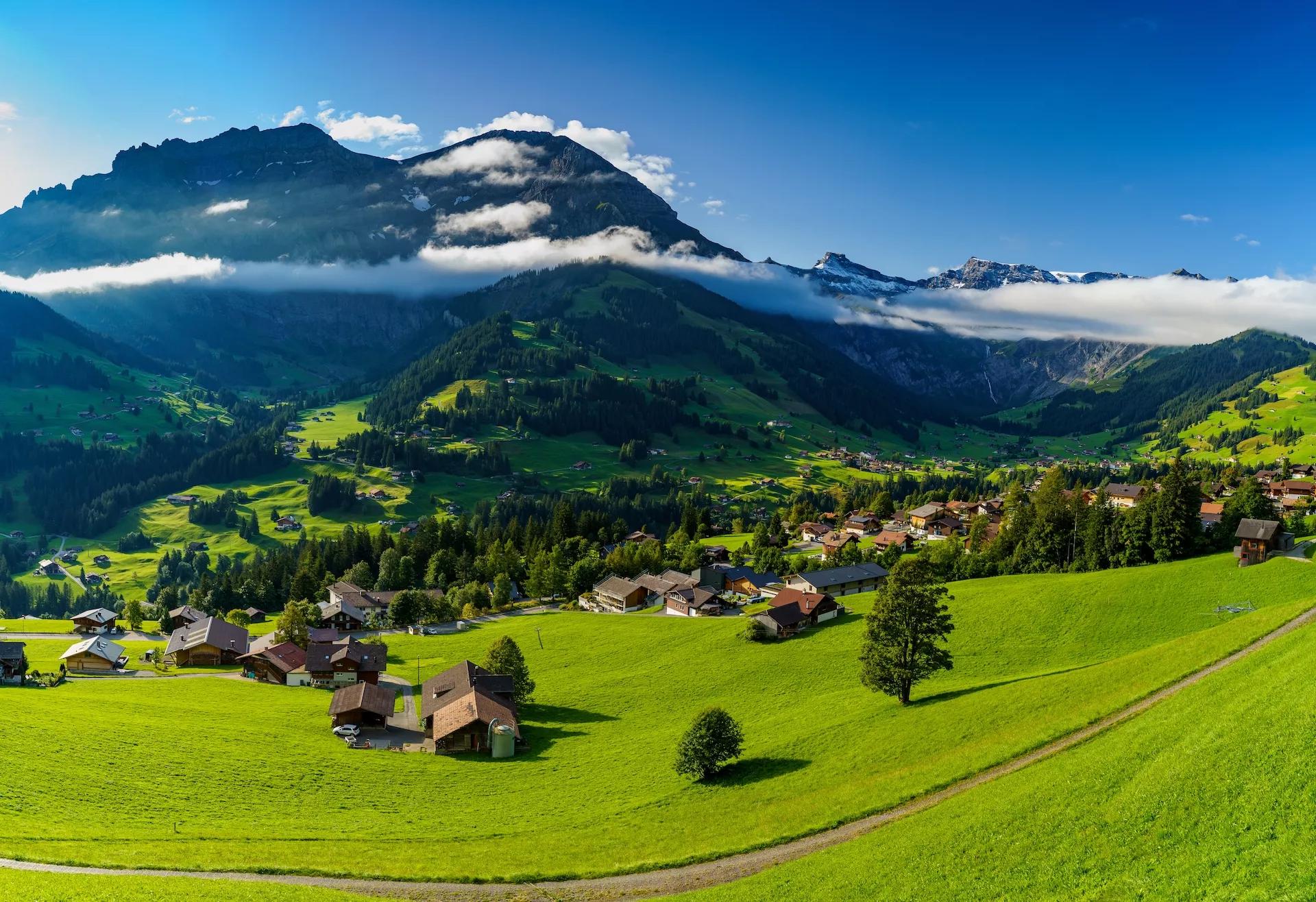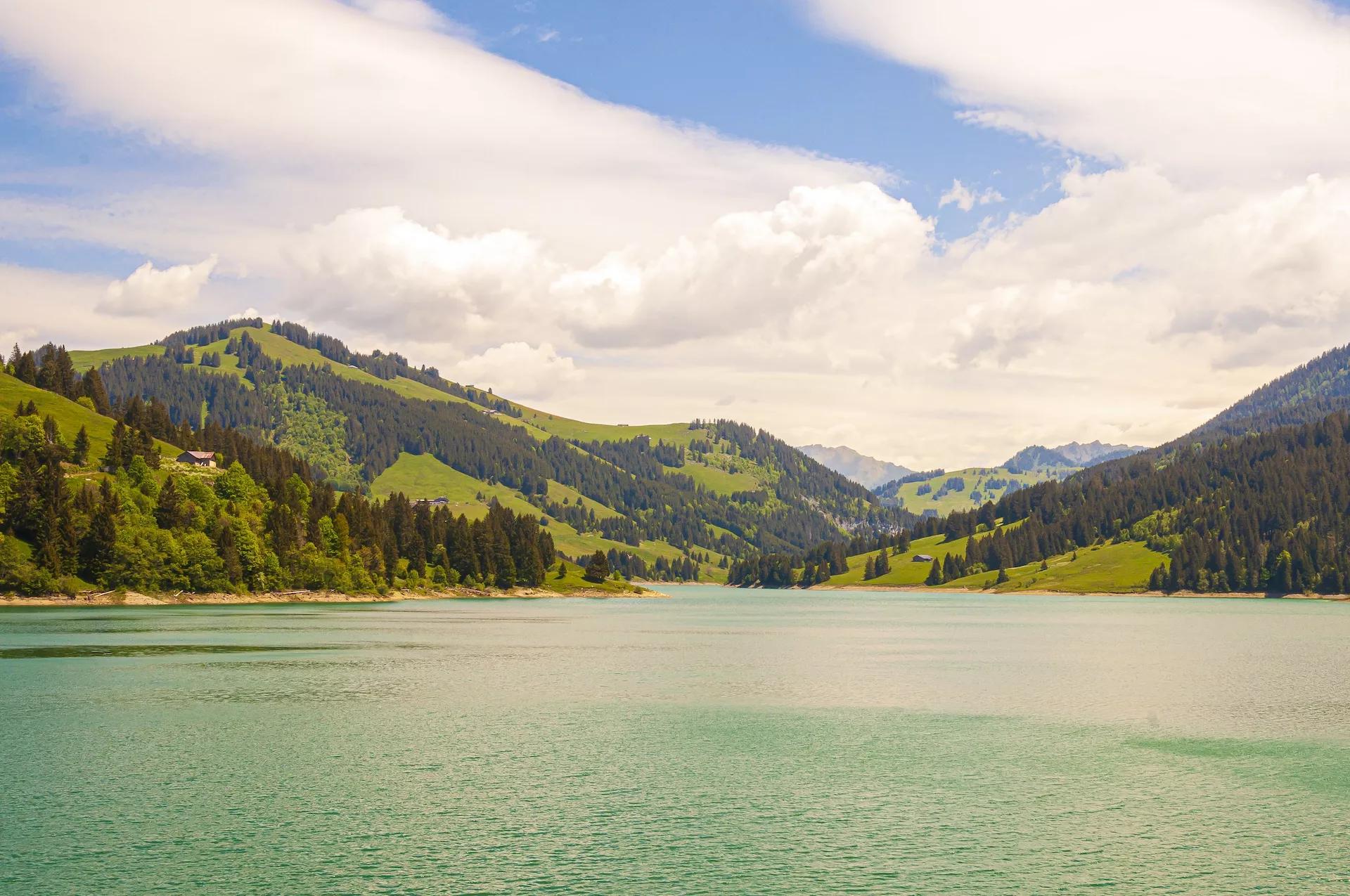14 km and 650 m of elevation gain / 100 m of elevation loss
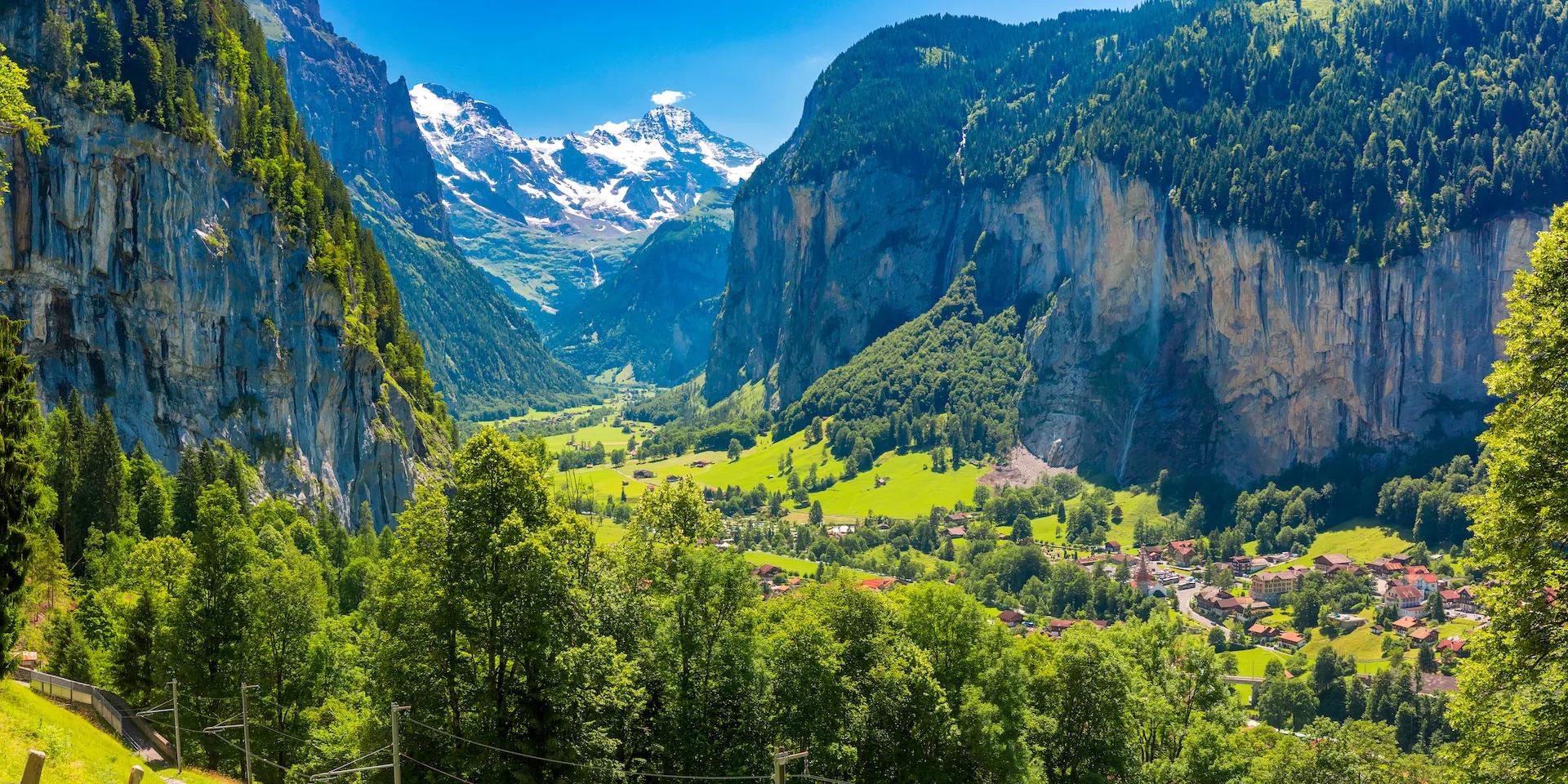





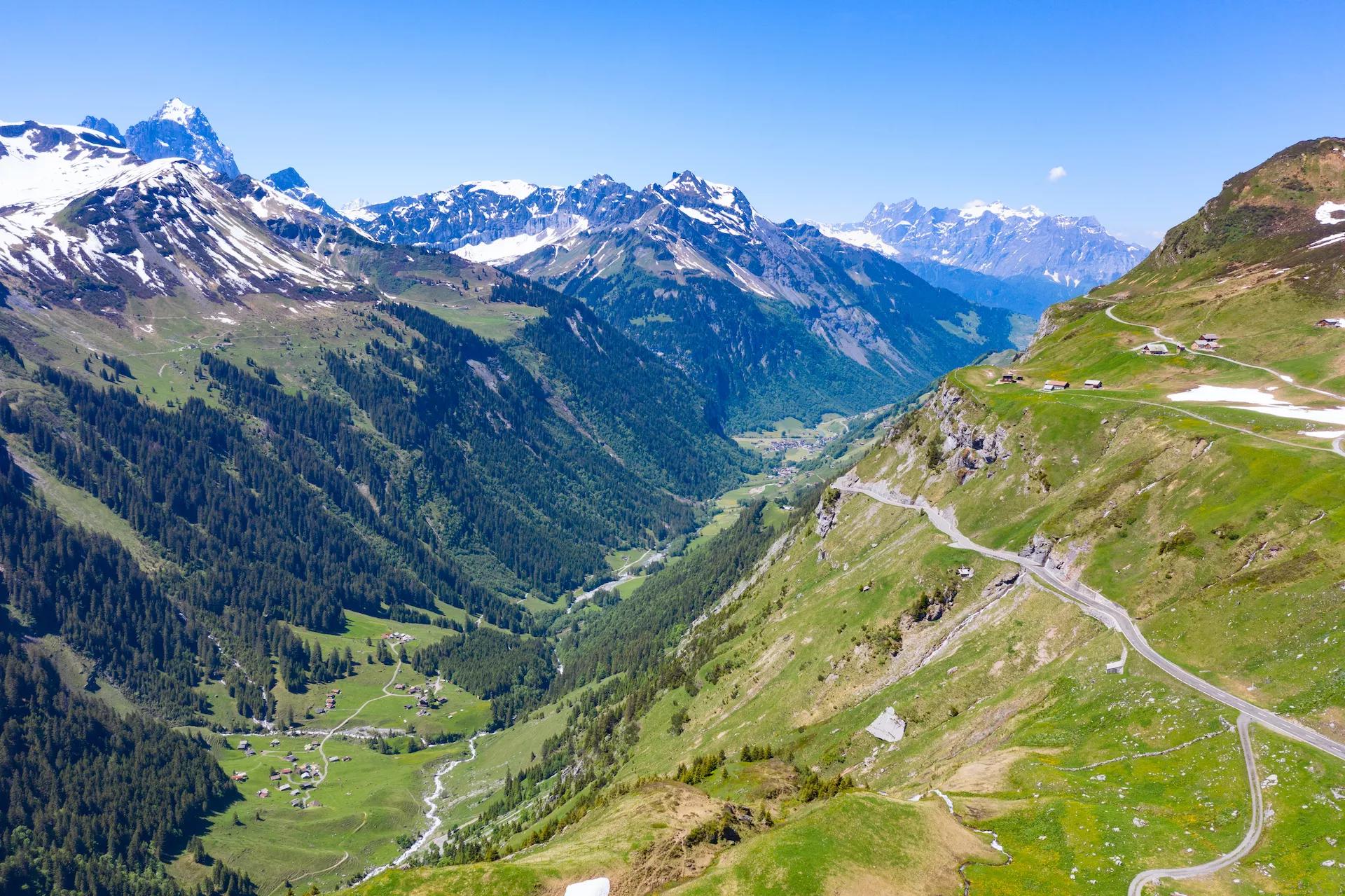




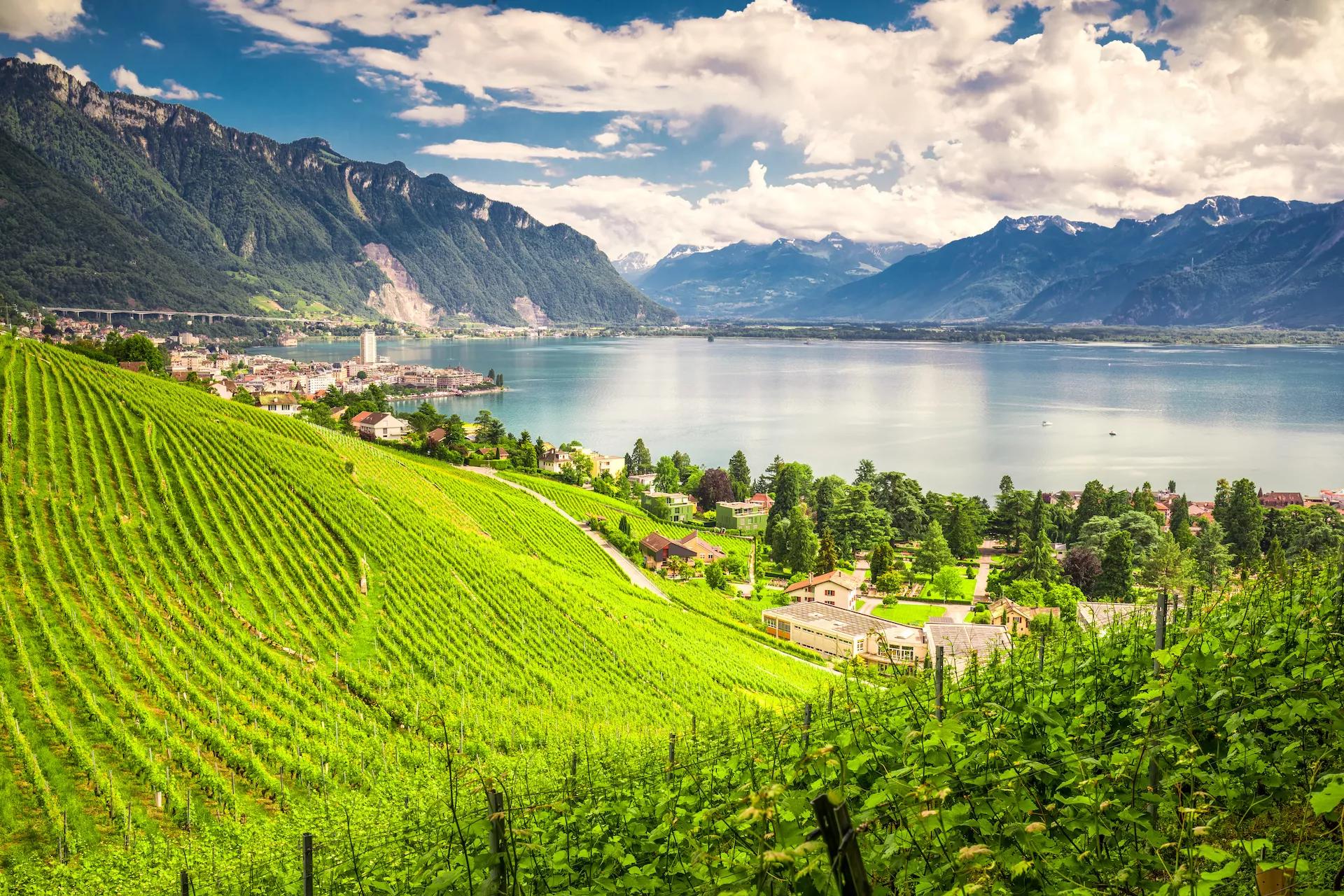



Via Alpina Switzerland
18 days / 17 nights
|
Starting point
Sargans
Finish point
Montreux
Season
From July to September
Technical level
3/5
Fitness level
5/5
Tour type
Inn-to-Inn
Starting point
Sargans
Finish point
Montreux
Season
From July to September
Technical level
3/5
Fitness level
5/5
Tour type
Inn-to-Inn
Highlights
- Hike the entire Via Alpina Green Trail in Switzerland
- Discover the unique landscapes and rich culture of the Swiss Alps
- Enjoy extraordinary views while crossing over 14 mountain passes
- Sleep in mountain huts, hotels, and lovely inns on your hike across the country
- Let us take care of the logistics so you can enjoy your adventure
Itinerary of the trip
FREE ITINERARY
Get Your Travel Itinerary
Loved the itinerary? Enter your email below, and we'll send a copy straight to your inbox.
What’s included in the price?
Self-guided
NOT INCLUDED
OPTIONAL EXTRAS
What to bring to the tour
- Hiking shoes/boots
- 25 to 45-liter backpack
- Base layer
- Sports T-shirts
- Hiking shorts
- Hiking water-repellent pants
- Waterproof jacket
- Midlayer
- Sports socks and underwear
- Leisurewear for evenings
- Down jacket
- Gloves
- Shade hat/cap
- Warm headwear
- Sunscreen
- Sunglasses
- Headlamp
- Hiking poles
- ID card or passport
- Snacks
- Cash
- Water bottles or hydration pack
- Sleeping liner
- Toiletries
- Toilet paper
- Small first aid kit
The Via Alpina is Switzerland’s number one hiking route, taking you over the 14 most beautiful mountain passes in the country, leading through a variety of culture, geology, flora, and fauna. It’s the best way to get to know the Swiss Alpine culture.
Also called the Swiss Alpine Pass Route, it starts in its east at the border with Liechtenstein and continues across the whole country to the west – ending at Lake Geneva. As a well-maintained trail, it is a hiker’s paradise.
It features 18 stages that require about 5-7 hours of walking per day to complete, but some can be shortened by the use of public transportation (cable cars and buses). It is less challenging technically than the Walker’s Haute Route, but fitness-wise it is quite similar.
To allow you to focus more on enjoying the trail and preparing for it on the physical side, we will take care of the logistical planning. We take your wishes and preferences to best advise you on your perfect Via Alpina itinerary.
We book all of your accommodations, organize luggage transfers, and more, so you can focus on the journey. And a few weeks before setting off, we’ll send you the detailed itinerary booklet with the planned GPS route.
If you think this hike is too long for you, or you don’t have the time, we also offer a shorter version of the trail – the Via Alpina: The Bear Trek.
Frequently Asked Questions
Ratings & Reviews

5.0 average rating

The Tour du Mont Blanc was easily one of the most memorable trips I’ve taken in years. From breathtaking views and warm, welcoming people to delicious food and charming mountain huts, every aspect of the journey was unforgettable. The hikes were significantly more challenging than I had anticipated, but the reward was well worth the effort. I can’t overstate how much smoother and more stress-free the experience was thanks to Hut to Hut’s incredibly detailed guides. Having accommodations pre-booked, access to a well-designed GPS trail map, and a comprehensive guide outlining what to expect, what to pack, and what to watch out for made all the difference. If you’re considering hiking the TMB, I wholeheartedly recommend booking with Hut to Hut. Their support turned a great adventure into an exceptional one.


Samo and Eva did a wonderful job in organizing my six-day Slovenian Mountain Trail hike. From the first contact to the delivery of the package with hike details, hut reservations, GPX etc. was efficient. I had a wonderful challenging hike as a solo self-guided hiker. Samo was supportive to the extent possible for my challenging day #4 from Aljazev Hut to Dolicu Hut in very bad weather. All arrangements worked perfectly. Highly recommend them if you want to take the difficulty out of the organization itself and simply enjoy the hiking expereince.


Incredibly route through the Karavank & Julien ranges. Huts were rustic & scenic and all check-ins were smooth. The route guides that Hut-to-Hut provided were extremely helpful, available offline & gave us peace of mind while traveling through new territory. Highly recommend.


Great Trip, Great Company! Nina and her team handled every detail flawlessly. We had originally planned to join a guided group tour, but choosing the flexibility of sleeping in and setting our own pace turned out to be the best decision—and the savings let us upgrade our hotels. The bag-transfer service was seamless from start to finish. I highly recommend them!


We did the five day/four night highlight tour and it was breathtaking! The Tours Du Mont Blanc team was very accommodating of our request for private rooms on the hike (when available) and also with last minute logistics due to the Mount Blanc tunnel closure. Samo and Nina were very responsive and answered all of our many questions :).


Samo and Eva did a wonderful job in organizing my six-day Slovenian Mountain Trail hike. From the first contact to the delivery of the package with hike details, hut reservations, GPX etc. was efficient. I had a wonderful challenging hike as a solo self-guided hiker. Samo was supportive to the extent possible for my challenging day #4 from Aljazev Hut to Dolicu Hut in very bad weather. All arrangements worked perfectly. Highly recommend them if you want to take the difficulty out of the organization itself and simply enjoy the hiking expereince.


Great Trip, Great Company! Nina and her team handled every detail flawlessly. We had originally planned to join a guided group tour, but choosing the flexibility of sleeping in and setting our own pace turned out to be the best decision—and the savings let us upgrade our hotels. The bag-transfer service was seamless from start to finish. I highly recommend them!


The Tour du Mont Blanc was easily one of the most memorable trips I’ve taken in years. From breathtaking views and warm, welcoming people to delicious food and charming mountain huts, every aspect of the journey was unforgettable. The hikes were significantly more challenging than I had anticipated, but the reward was well worth the effort. I can’t overstate how much smoother and more stress-free the experience was thanks to Hut to Hut’s incredibly detailed guides. Having accommodations pre-booked, access to a well-designed GPS trail map, and a comprehensive guide outlining what to expect, what to pack, and what to watch out for made all the difference. If you’re considering hiking the TMB, I wholeheartedly recommend booking with Hut to Hut. Their support turned a great adventure into an exceptional one.


Incredibly route through the Karavank & Julien ranges. Huts were rustic & scenic and all check-ins were smooth. The route guides that Hut-to-Hut provided were extremely helpful, available offline & gave us peace of mind while traveling through new territory. Highly recommend.


We did the five day/four night highlight tour and it was breathtaking! The Tours Du Mont Blanc team was very accommodating of our request for private rooms on the hike (when available) and also with last minute logistics due to the Mount Blanc tunnel closure. Samo and Nina were very responsive and answered all of our many questions :).


All available guidance options
Self-guided
Are you looking for a good adventure and limitless flexibility? Then you should try out a self-guided tour, perfect for independent explorers who want to set their own pace. Without the need to stick to a group schedule, you’re free to linger at scenic viewpoints while the logistics are taken care of in advance.

Hassle-Free
We handle itineraries, accommodations, and anything else you prefer not to deal with, so you can enjoy a carefree hike.

Book with confidence
We are a financially protected company, fully bonded and insured, keeping your money safe and allowing you to travel with confidence.

Tried & Tested Adventures
Only the best hut to hut hikes of Switzerland, cherry-picked by our local team with an in-depth knowledge of the region.

Unbeatable support
Our 24/7 customer support is where we show our passion, bringing you a better experience by making your well-being our number one priority.












